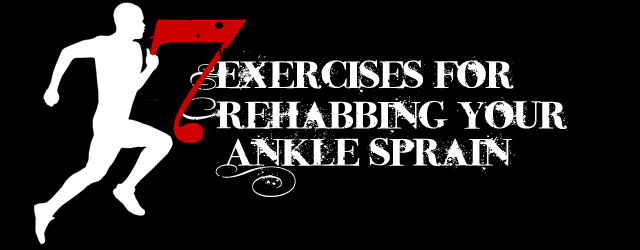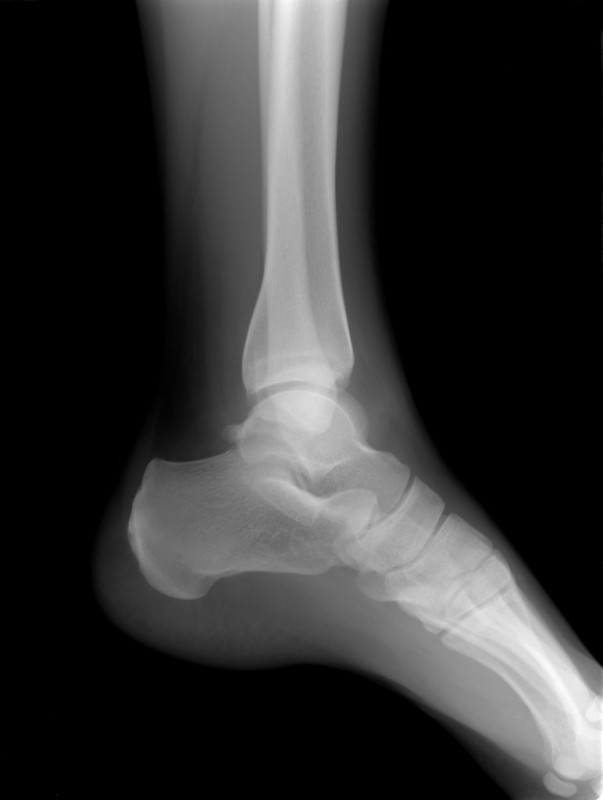
Seven Exercises for Rehabbing Your Ankle Sprain
My ankles are destroyed—or at least they used to be. I’ve suffered several ankle injuries on both ankles, and every time was just as bad, if not worse, than the time before. In my opinion, ankle injuries are one of the most unexpected and utterly annoying injuries you can have.
Sprained both ankles? You’re done. All you can do is sit in front of your computer and spend that new found time researching how to get rid of the sprain without sawing your ankle off. You know what’s the worst part? All you’ll find is how you need to follow RICE and maybe go to the doctor if you're really freaked out about it.
For those who don’t remember, RICE stands for:
- Rest
- Ice
- Compression
- Elevation
Although it's probably the correct thing to do for most injuries, I found that RICE is ineffective when it comes to the ankle.
Why RICE sucks and mobility/stability is key
The idea behind RICE revolves around icing the injured area to reduce pain and swelling. The problem with this is that icing inhibits blood flow, and without blood flow, there can't be any recovery. It also stiffens up the ligaments to the point that all range of motion is lost. This means that the next time you stand up, you need to make sure to keep a chair behind you to catch you when you fall back down. Basically, ice just makes the injury more painful and longer lasting.
The most important part of the healing equation is to save as much range of motion on your ankles to keep the blood flowing. This allows you to increase the speed of recovery. From there, it's of utmost importance to work on stability. Due to the sprain, the ankle is unstable. The only way to get it back to full strength as soon as possible is by regaining that stability. At the same time, it will be a very good idea to keep improving the range of motion of your ankle to tolerate movement again.
To do this, here are the seven exercises that I've used myself to get back to full strength in half the time it used to take me to heal an ankle injury:
- Alphabet ankles
- Band foot dorsiflexion and plantar flexion
- Calf raises
- Tip toe farmer's walks
- Barefoot glute thrust
- Barefoot single leg Romanian deadlift
- Barefoot heavy deadlifts
Exercise explanation and insider tips
Alphabet ankles: To perform these, sit on a chair. Elevate your ankle in the air and write the alphabet with your feet. Go as far as the pain allows. Yes, this means writing out A, B, C, and so on with the motions of your foot in the air.
- Why it works: This will work just about every muscle around your ankles while simultaneously working on full range of motion.
- Insider tip: Rather than performing it perfectly from the beginning, you should perform it slowly, partially, and frequently. As ankle strength and range of motion improves, you can perform it better and faster while keeping the frequency.
Band foot dorsiflexion and plantar flexion: Sit on the floor and lay the injured ankle on top of the other leg out in front of you. Grab an elastic band and wrap it around the ball of your foot. Pull and your foot will go into dorsiflexion. From here, move your ankle up and down. Go as far as the pain allows.
- Why it works: It's dorsiflexion and plantar flexion under load. This helps once you get back up and moving because it's the same movement as walking.
- Insider tip: Use this as your indicator exercise. If you improve on this, your ankle rehab is working.
Calf raises: Get on something with an edge and go to your toes. Repeat.
- Why it works: This places a heavier load on ankle flexion while keeping your ankles safe.
- Insider tip: As you get better, close your eyes so that you can incorporate balance and, in turn, a stronger stability component to the exercise.
Tip toe farmer's walk: Grab a pair of heavy dumbbells, get on your toes, and walk.
- Why it works: It's stability training with motion. During the walk, a majority of your weight will be on one ankle, furthering the stability needed to keep you from falling.
- Insider tip: Do these after the initial stage of rehabilitation, as it will place a good amount of pressure on your ankle. Give it a good week before doing this.
Barefoot glute thrust: Get in a sit-up position. With your heels, push up to get your hip up from the floor.
- Why it works: It places load on your ankles without much range of motion.
- Insider tip: The closer you put your ankles to your glute, the more range of motion is needed from your ankles.
Barefoot single leg Romanian deadlift: Get on one leg, stand tall, hip hinge, and get back up again without touching the ground.
- Why it works: It places plenty of load on one ankle without too much range of motion.
- Insider tip: Do this barefoot and use your heels.
Barefoot heavy deadlifts: Get close to the bar, stand tall, hip hinge down, and pull the weight up by thrusting your hips forward until your body is aligned.
- Why it works: This is probably the most useful exercise of the bunch. It requires two legs, so it reduces the chances of injuring an ankle again while also allowing much more load. It's the essence of stability training.
- Insider tip: Do this barefoot and use your heels as well. This can be done early in the rehabilitation process.
Ankle rehabilitation timeline
Although things change if an ankle injury is a grade II rather than a grade I, a decent rehabilitation template looks like this:
Week 1
- Tons of rest
- Alphabet ankles
- Band foot dorsiflexion and plantar flexion
- Barefoot glute thrust
Week 2 (keep the exercises from week one)
- Calf raises
- Barefoot heavy deadlifts
Week 3 (keep the exercises from weeks one and two)
- Tip toe farmer's walks
- Barefoot single leg Romanian deadlift
- More barefoot heavy deadlifts
For those with a grade II ankle injury, I suggest lengthening everything by another week to allow for more recovery and adaptation before increasing the intensity. Regardless, let your pain dictate how fast or slow you progress. Listen to your body.
Conclusion
When it comes to ankle injuries, we need to rethink the way we go about rehabilitation. It's paramount to focus on stability and mobility right from the get go; RICE is ineffective for this. It used to take me eight to twelve weeks to be fully recovered from an ankle injury, but now it only takes four weeks, and injuries happen much less frequently. There isn't any point of being in pain longer than you have to be.










15 mins with a cold pack can significantly reduce pain and while it will briefly reduce blood flow to help encourage reduction of swelling, and said blood flow is easily regained with gentle ROM exercises. The jury is definitely out in terms of long-term benefits or harm of treatment with ice/cold packs, but exaggerating the possible harms of usage just spreads more myths.
Thanks,
Warren
Can also text 253 297-0824
Tens treatment for
Ankles and MRI X-RAYS?
I tried your exercises, and wow, the pain and motion have substantially subsided! I am thrilled to have found your site and I just want to say thank you from the bottom of my heart. I am a staffing coach at a warehouse and go back to work tomorrow, 3-26-2023. My hours are extended from 3 12-hour days to 5 8-hour days. I have to be prepared to walk the entire warehouse checking on employees and walking up an enormous, very steep staircase all day long. At least I can get back to working out, slowly but surely, because I know I gained about 5-7 lbs healing my ankle sitting, crying, eating, and resting. NO MORE! Gains coming back soon!!!! I'm a fighter never a quitter!
You have saved me in so many ways, I appreciate finding you! God bless you and your family. :)